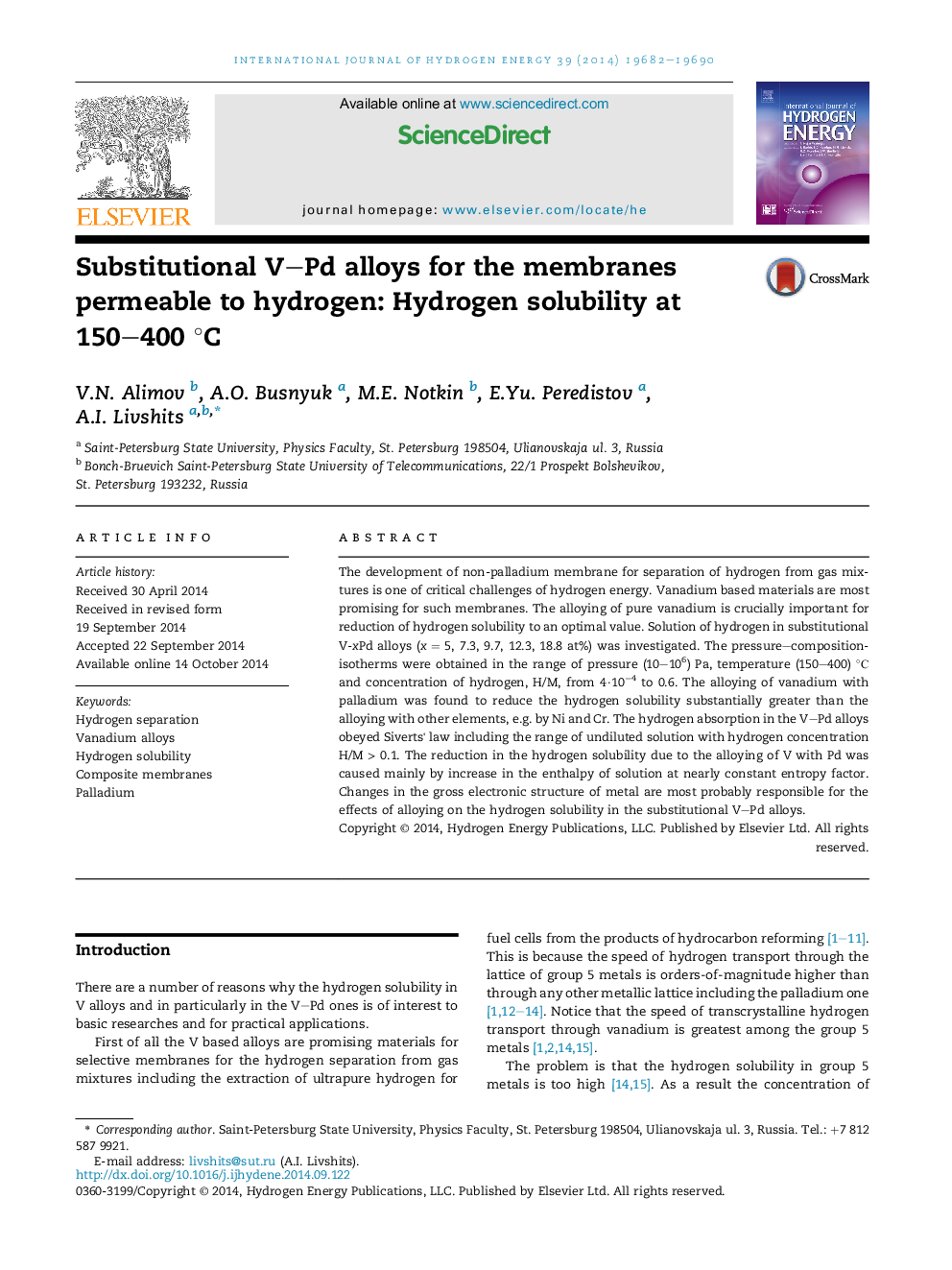| Article ID | Journal | Published Year | Pages | File Type |
|---|---|---|---|---|
| 1280720 | International Journal of Hydrogen Energy | 2014 | 9 Pages |
•Hydrogen solubility in V–Pd alloys with different content of Pd is investigated.•The pressure–composition-isotherms for the V–Pd–H2 system are obtained.•Pd has greater effect on H solubility in V-based alloys than Ni, Cr and W.•The cause of reduction in H solubility is an increase in the enthalpy of solution.
The development of non-palladium membrane for separation of hydrogen from gas mixtures is one of critical challenges of hydrogen energy. Vanadium based materials are most promising for such membranes. The alloying of pure vanadium is crucially important for reduction of hydrogen solubility to an optimal value. Solution of hydrogen in substitutional V-xPd alloys (x = 5, 7.3, 9.7, 12.3, 18.8 at%) was investigated. The pressure–composition-isotherms were obtained in the range of pressure (10–106) Pa, temperature (150–400) °С and concentration of hydrogen, H/M, from 4·10−4 to 0.6. The alloying of vanadium with palladium was found to reduce the hydrogen solubility substantially greater than the alloying with other elements, e.g. by Ni and Cr. The hydrogen absorption in the V–Pd alloys obeyed Siverts' law including the range of undiluted solution with hydrogen concentration H/M > 0.1. The reduction in the hydrogen solubility due to the alloying of V with Pd was caused mainly by increase in the enthalpy of solution at nearly constant entropy factor. Changes in the gross electronic structure of metal are most probably responsible for the effects of alloying on the hydrogen solubility in the substitutional V–Pd alloys.
